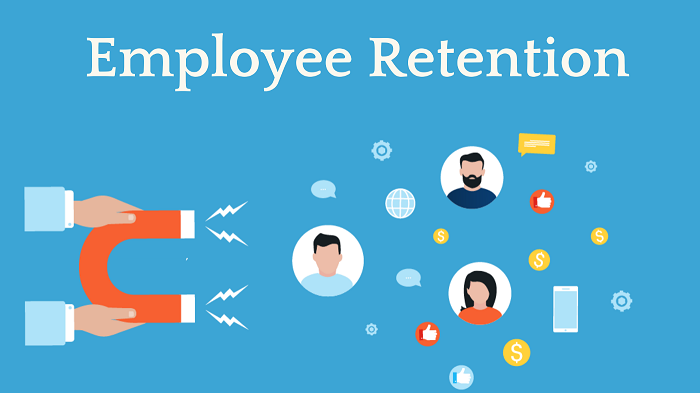Introduction
A productive workforce is a key to success for any business. Every employee contributes to the business’ vision, mission, and objectives. However, to be a valuable employee requires quite an effort. Studies have shown that employee happiness can increase productivity by 12 percent, and disengagement can cost businesses approximately $550 billion annually.
There is no single technique to foster employee engagement. It is ultimately dependent on how an organization manages, trains, and encourages employees to perform at their best. Therefore, businesses must come up with strategies to boost employee engagement and productivity.
Defining employee satisfaction and why it is important
In the HR department, employee satisfaction refers to how satisfied employees are with their employers and their jobs. Employee satisfaction is an important metric for assessing a company’s overall health. Many organizations conduct periodic satisfaction surveys with their employees to measure satisfaction levels and track changes. Employees’ high level of satisfaction with their employers is an indication of a positive work environment.
However, dissatisfaction is bound to happen in organizations for a variety of reasons. The following are some of them:
- Insufficient compensation
- Slow growth in career
- Lack of recognition and appreciation
- Poor relationships with managers and coworkers
- Unsatisfactory work/ life balance
Many employees are forced to leave their jobs in search of better employment opportunities due to these reasons. The following section highlights the importance of employee satisfaction in retaining them.
How important is employee satisfaction for organizations?
The most valuable resource that a company has is its employees. A company’s ability to keep employees happy plays a key role in its success.
- Positive work environment: Employees who are happy and feel satisfied are more productive. The employee will likely perform better if they are pleased with the work environment.
- Better retention: Satisfied employees are less likely to quit their current job. Thus, employee retention depends on the employee’s satisfaction with their job.
- Lesser absenteeism: Employee satisfaction is linked to lower absenteeism which can save the company money and time.
- Higher Productivity: Satisfied employees, regardless of their seniority, perform better. The company’s effectiveness is increased if there are more high-performing employees.
- Commitment to the job: If employees feel that the business is in their best interest, they will work harder.
- Positive work culture: Employees unhappy with their jobs would find fault in everything and become too rigid. At the same time workers happy with their jobs are more open to learning new technologies and software.
In other words, being satisfied at work mitigates psychological and social risks and is profitable for all companies across industries.
Factors Influencing Employee Satisfaction
To improve work satisfaction, we must look at both the internal and external variables that contribute to job satisfaction. Extrinsic variables relate to work while intrinsic factors are more personal.
- Individual factors: An employee’s personality can be affected by various factors, including self-esteem, conscientiousness and many others.
- Work-related variables: This is related to the characteristics of the job, such as the skills required, the type of activities performed, the level and amount of autonomy, and the feedback received.
- Organizational factors: Factors related to the organization are leadership and supervision (technical or emotional support), coworker relationships, job safety, salary, development, and the cultural to the organization.
Employee engagement is enhanced by the collective effort of team members. Although each member has their own work goals, psychologists believe certain team factors can impact job satisfaction. You and your team may benefit from understanding the psychological factors that influence job satisfaction.
Five psychological factors that impact employee satisfaction
-
Achievement of goals
Employees who feel they have achieved something are happier at work. Even the smallest victories for the team members would be significant because they feel like they are part of something bigger.
-
Regular feedbacks
Employers can help their team members better understand their abilities and potential for growth by offering constructive criticism. Negative feedback is more than pointing out the mistakes, which may leave employees wondering what they did wrong, limiting their scope for improvements.
-
Achieving a healthy work/life balance
A longitudinal study found that unrealistic job performance expectations can lead to emotional exhaustion, psychological problems, and decreased work engagement. Employees can reduce the negative effects of work-related stress on their personal and professional life by limiting their work beyond work hours.
-
Conditions at work in terms of physical exertion
The office environment can have a major impact on job satisfaction. It will be more attractive if you add plants and bright lighting to your workplace. A comfortable workstation, and clear boundary between the noisy and quiet areas can make employees more engaged.
-
Support from the management team
People are happier at work if they feel their employer is providing enough assistance. Your employees’ happiness depends on several factors, including how their superiors treat them, the benefits they receive, and other subtle signals.

How to measure employee satisfaction?
The three ways to evaluate employee satisfaction in the workplace are- A single global score, a global measurement, and a facet-based measure. A fourth technique, also known as a personal interview, is also used in certain cases.
Single global rating:
In most cases, it is calculated based on the response to a single question like “How satisfied are you with your job?” There are usually five possible responses, ranging from extremely satisfied to very unhappy. Its supporters claim it is as effective as larger job satisfaction surveys.
Global Measurement and Facet Measurement methods :
They are complex, yet more precise than single surveys. Both surveys ask about many aspects of employment, including working conditions, pay and benefits, and relationships with colleagues. Each point corresponds to a specific scale that researchers then combine to create a participant’s score. Global measurement yields a single score, while the facets method calculate scores for each aspect.
What do stats say about the ways to improve employee satisfaction?
Your employee’s work satisfaction can be affected by several variables. These include autonomy, flexibility, recognition of accomplishments, and acknowledgment of efforts. Check out these statistics to better understand the impact work satisfaction can have on your company.
- Employee engagement: According to Business2Community, organizations with satisfied employees showed 202 percent better performance than those with low employee engagement.
- Growth and Development: Udemy reports that 42 percent of millennials consider learning and development the most important criteria when choosing a workplace.
- Employer Culture: According to a Hays survey of 2000 workers, 43% said that their primary motivation for looking for a new job is because of the company’s culture.
- Skills: Gallup says that workers who feel they can use their strengths and talents at work are 15% less likely to quit their job.
- Empathy: According to Businessolver, 92 percent of workers would be more inclined to remain with their companies if their managers were more empathetic.
Eight unique strategies to enhance employee morale
Appreciate achievements
Deloitte research found that employees acknowledged by their employers have higher levels of engagement, productivity, and performance than those who are not. An increase of 15% in engagement could result in a 2 percent improvement in company revenues.
Opportunity to grow
Employees should have the chance to advance in their careers. Leaders and companies should engage in employee development through masterclasses or online courses, seminars, certificates, and other avenues.
Workplace flexibility
Employers should be concerned more about providing a healthy work/life balance for their employees. Stay competitive by creating hybrid work environments. Avoid micromanagement at all costs and promote open-mindedness and cooperation among team members.
Encourage openness
Dissatisfied employees are those who feel they are not up-to-date with workplace changes. When it comes to information, it is important to be open to employees. Use internal communication platforms to share company news and events.
Conduct surveys
Managers might find surveys useful in understanding what employees think about the organization. It may also be useful for supplying information about particular metrics managers might want to address at work.
Promote healthy habits
Organizations can promote employee wellness by offering health information and seminars, regular breaks, annual leave, healthier food options, discounts on gym memberships, and other assistance. You can also create corporate communities that help employees achieve weight loss or other fitness goals.
Establish genuine relationships
Participation in team-building activities at work makes employees more likely to collaborate and cooperate. This is often cited by many as an important element of modern workplace success. To help employees build genuine relationships, companies may organize regular team meetings such as Friday happy hours or weekly team lunches.
Pay attention to housekeeping and workspace utilities
Even the smallest details can make a big difference. Employees may be unhappy if they have to use inefficient software or slow servers. Any employee problems that arise should be addressed immediately.
Conclusion
Studies show that happier employees are more productive, creative, and engaged in their work. Small changes in the short term can make a big difference in the long term. Hence, start with the simplest of these changes in your organization, if you want to improve employee satisfaction.
